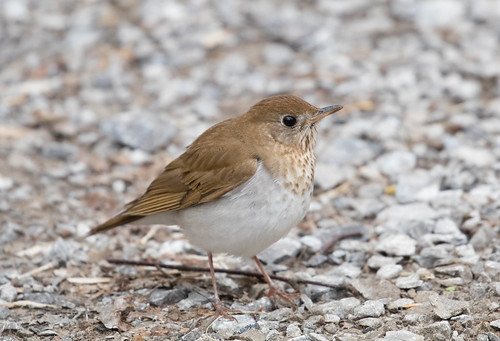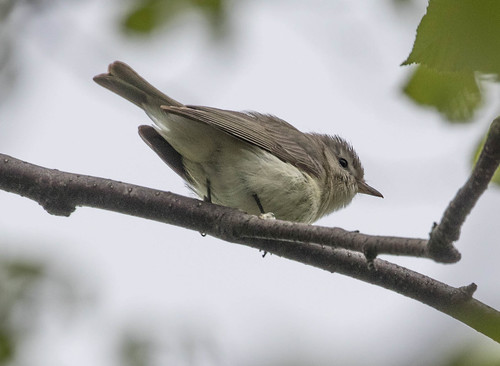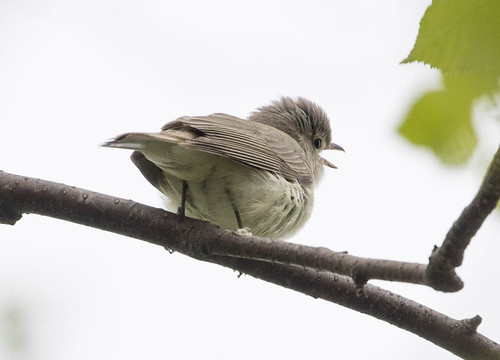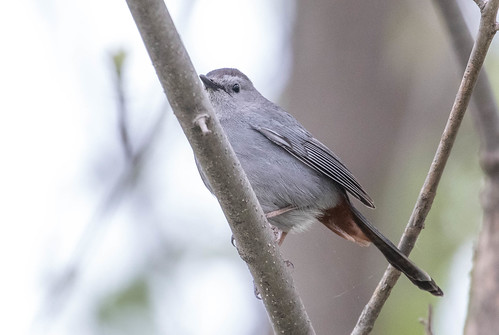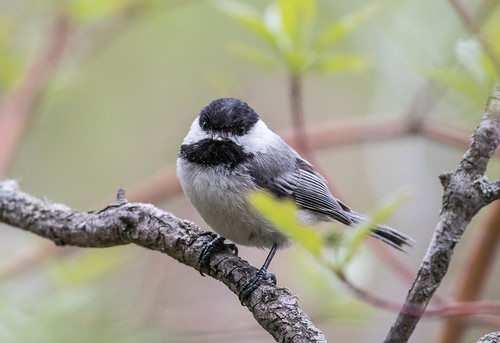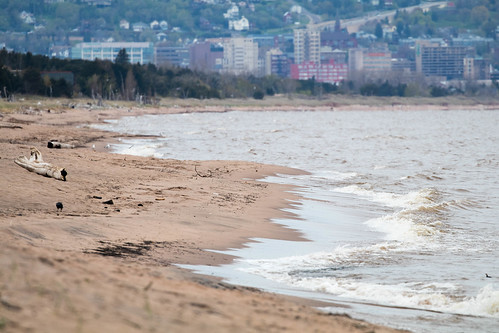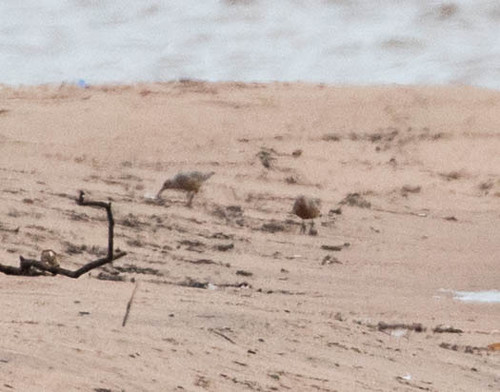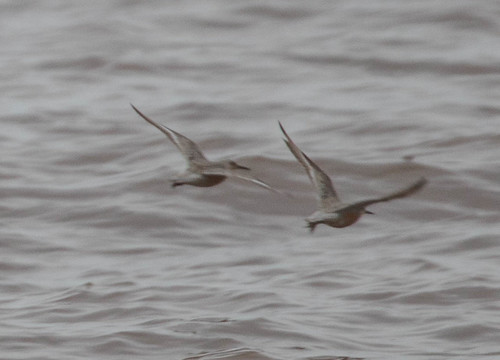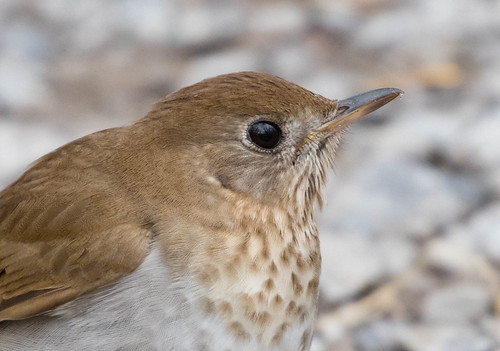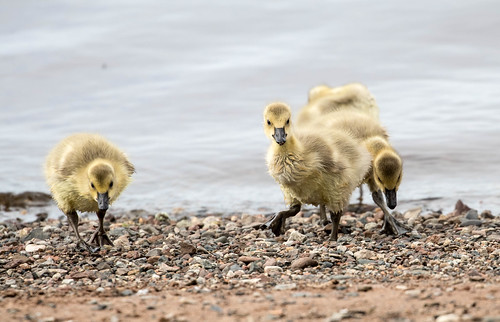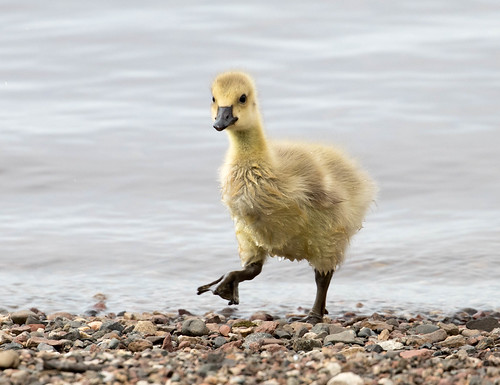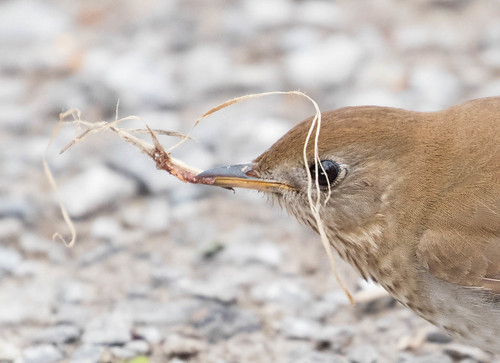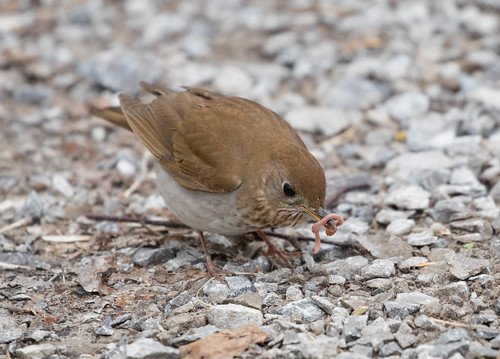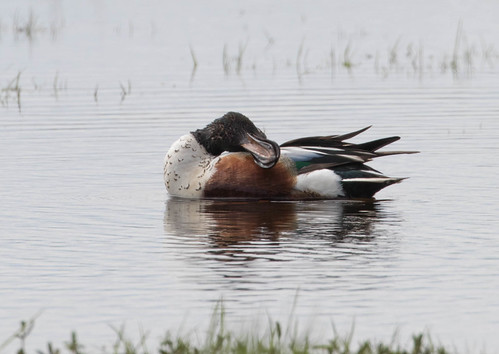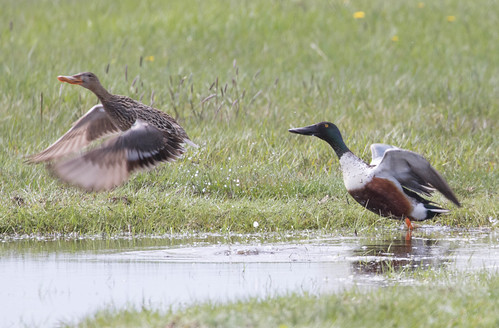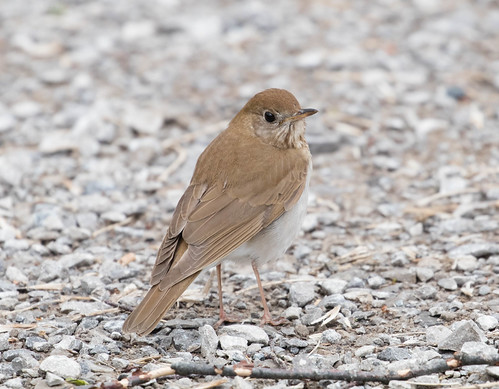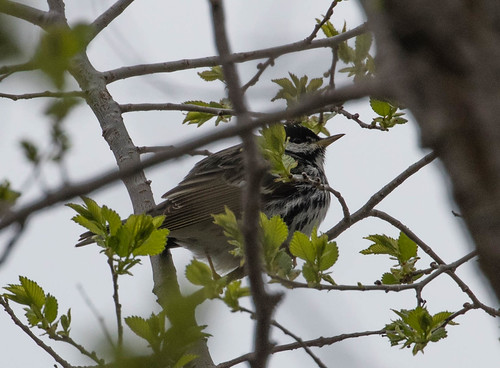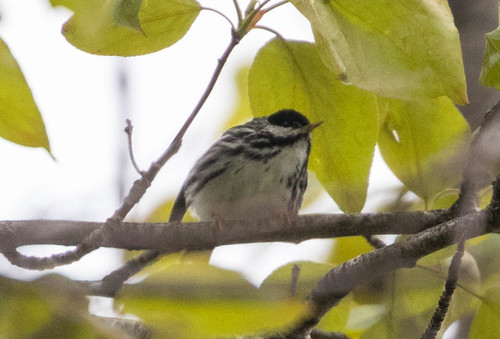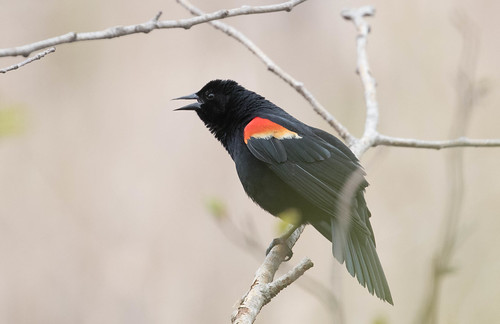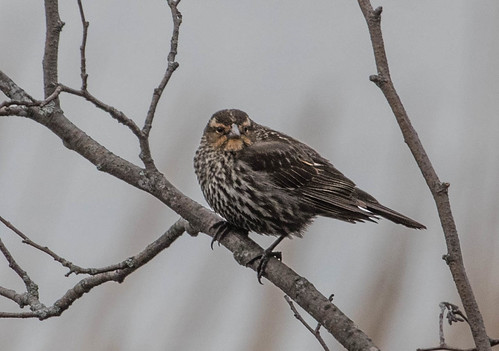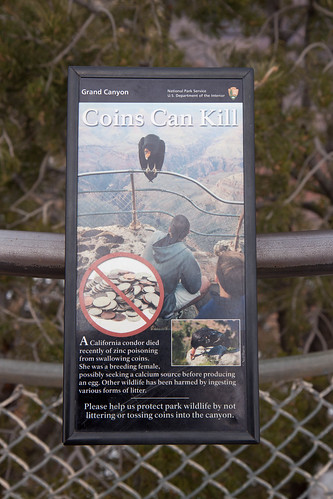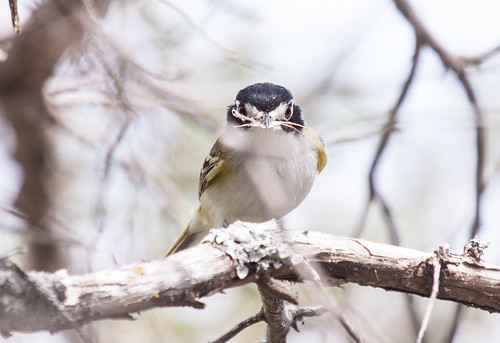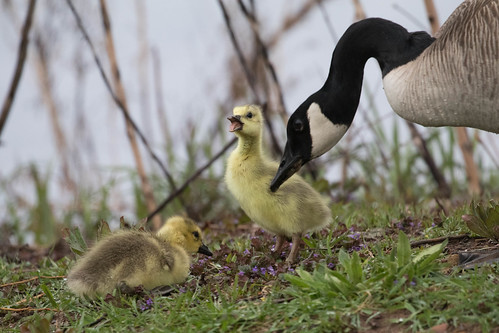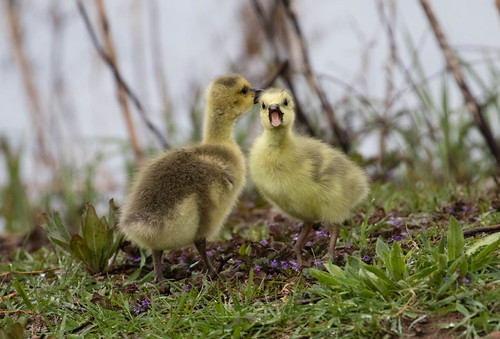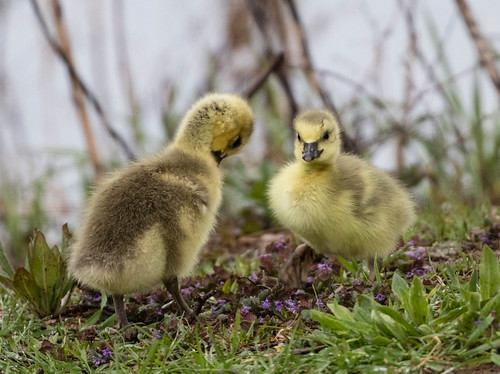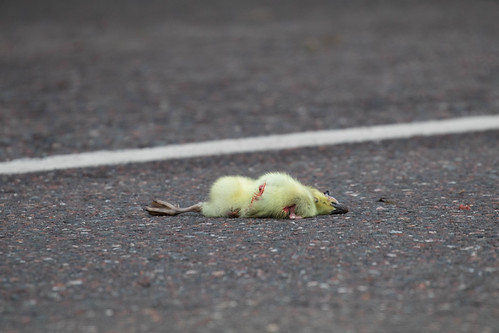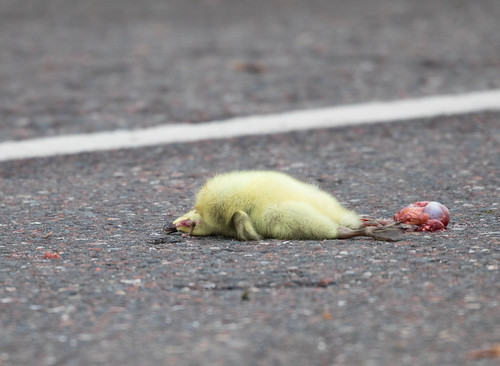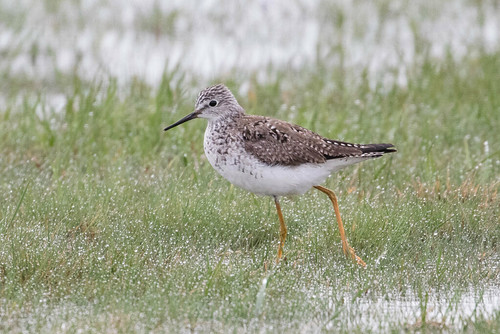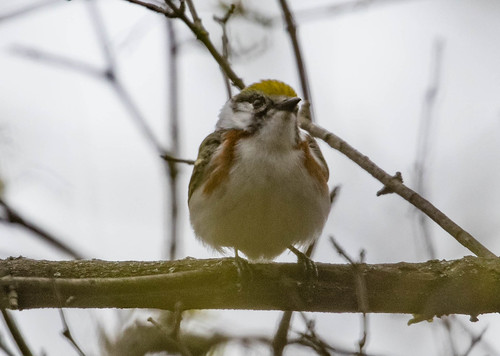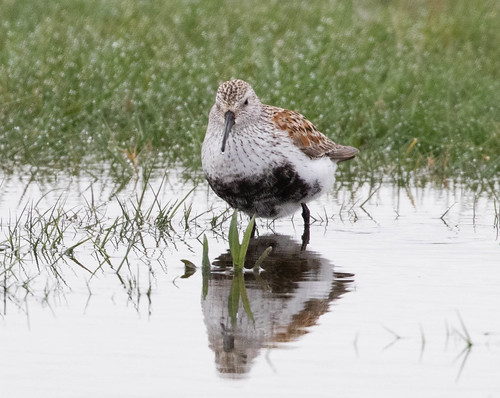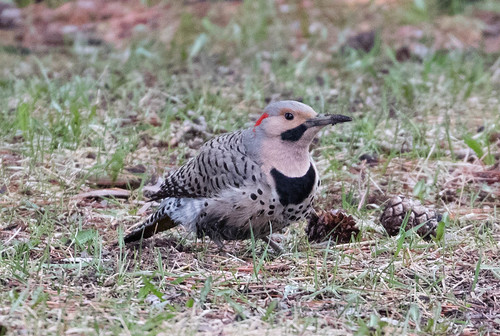We had a total of 15 Duluth Audubon Spring Warbler Walks this spring; it would have been 17 but two were rained out. If people went on every Park Point walk, plus the little extension after two Park Point walks when several of us stopped at another stop on the Bay, they’d have ended with 111 species. The Western Waterfront Trail walks didn’t give us quite so many species—96 in total—but 25 of them weren’t seen on Park Point. If you went on all 15 walks, you’d have ended the season with 136 species, including 21 species of warblers.
Long underwear were almost imperative on a few of the earlier walks; even on May 30, I needed a warm jacket, gloves, and a scarf to be comfortable.
This summer I might lead a few informal walks now and then on my own: I’ll post any announcements on the top of the sidebar on my blog.
Western Waterfront Trail Composite List (96 species)
Canada Goose (Branta canadensis)
Trumpeter Swan (Cygnus buccinator)
Wood Duck (Aix sponsa)
Mallard (Anas platyrhynchos)
Blue-winged Teal (Anas discors)
Green-winged Teal (Anas crecca)
Ring-necked Duck (Aythya collaris)
Greater/Lesser Scaup (Aythya marila/affinis)
Long-tailed Duck - Clangula hyemalis
Bufflehead (Bucephala albeola)
Common Goldeneye (Bucephala clangula)
Hooded Merganser (Lophodytes cucullatus)
Common Merganser (Mergus merganser)
Red-breasted Merganser (Mergus serrator)
Pied-billed Grebe (Podilymbus podiceps)
Horned Grebe (Podiceps auritus)
Double-crested Cormorant (Phalacrocorax auritus)
Great Blue Heron (Ardea herodias)
Turkey Vulture (Cathartes aura)
Osprey (Pandion haliaetus)
Northern Harrier (Circus cyaneus)
Sharp-shinned Hawk (Accipiter striatus)
Bald Eagle (Haliaeetus leucocephalus)
Rough-legged Hawk (Buteo lagopus)
Sora (Porzana carolina)
Spotted Sandpiper (Actitis macularius)
Lesser Yellowlegs (Tringa flavipes)
Ring-billed Gull (Larus delawarensis)
Rock Pigeon (Feral Pigeon) (Columba livia (Feral Pigeon))
Mourning Dove (Zenaida macroura)
Chimney Swift (Chaetura pelagica)
Belted Kingfisher (Megaceryle alcyon)
Red-bellied Woodpecker (Melanerpes carolinus)
Downy Woodpecker (Picoides pubescens)
Hairy Woodpecker (Picoides villosus)
Northern Flicker (Colaptes auratus)
Pileated Woodpecker (Dryocopus pileatus)
Merlin (Falco columbarius)
Least Flycatcher - Empidonax minimus
Eastern Phoebe (Sayornis phoebe)
Blue-headed Vireo (Vireo solitarius)
Warbling Vireo (Vireo gilvus)
Alder/Willow Flycatcher (Traill's Flycatcher) (Empidonax alnorum/traillii)
Red-eyed Vireo (Vireo olivaceus)
Blue Jay (Cyanocitta cristata)
American Crow (Corvus brachyrhynchos)
Common Raven (Corvus corax)
Tree Swallow (Tachycineta bicolor)
Black-capped Chickadee (Poecile atricapillus)
Red-breasted Nuthatch (Sitta canadensis)
White-breasted Nuthatch (Sitta carolinensis)
Brown Creeper (Certhia americana)
House Wren (Troglodytes aedon)
Marsh Wren (Cistothorus palustris)
Golden-crowned Kinglet (Regulus satrapa)
Ruby-crowned Kinglet (Regulus calendula)
Veery (Catharus fuscescens)
Hermit Thrush (Catharus guttatus)
American Robin (Turdus migratorius)
Gray Catbird (Dumetella carolinensis)
Brown Thrasher (Toxostoma rufum)
European Starling (Sturnus vulgaris)
Cedar Waxwing (Bombycilla cedrorum)
Ovenbird (Seiurus aurocapilla)
Black-and-white Warbler (Mniotilta varia)
Tennessee Warbler (Oreothlypis peregrina)
Orange-crowned Warbler (Oreothlypis celata)
Nashville Warbler (Oreothlypis ruficapilla)
Common Yellowthroat (Geothlypis trichas)
American Redstart (Setophaga ruticilla)
Magnolia Warbler (Setophaga magnolia)
Blackburnian Warbler (Setophaga fusca)
Yellow Warbler (Setophaga petechia)
Chestnut-sided Warbler (Setophaga pensylvanica)
Blackpoll Warbler (Setophaga striata)
Palm Warbler (Setophaga palmarum)
Pine Warbler (Setophaga pinus)
Yellow-rumped Warbler (Setophaga coronata)
Wilson's Warbler (Cardellina pusilla)
American Tree Sparrow (Spizelloides arborea)
Chipping Sparrow (Spizella passerina)
Fox Sparrow (Passerella iliaca)
Dark-eyed Junco (Junco hyemalis)
White-throated Sparrow (Zonotrichia albicollis)
Song Sparrow (Melospiza melodia)
Swamp Sparrow (Melospiza georgiana)
Northern Cardinal (Cardinalis cardinalis)
Rose-breasted Grosbeak (Pheucticus ludovicianus)
Red-winged Blackbird (Agelaius phoeniceus)
Rusty Blackbird (Euphagus carolinus)
Common Grackle (Quiscalus quiscula)
Brown-headed Cowbird (Molothrus ater)
Baltimore Oriole (Icterus galbula)
Purple Finch (Haemorhous purpureus)
Pine Siskin (Spinus pinus)
American Goldfinch (Spinus tristis)
Park Point Composite List (111 species)
Canada Goose (Branta canadensis)
American Wigeon (Anas americana)
Mallard (Anas platyrhynchos)
Blue-winged Teal (Anas discors)
Northern Shoveler (Anas clypeata)
Green-winged Teal (Anas crecca)
Redhead (Aythya americana)
Greater Scaup (Aythya marila)
Lesser Scaup (Aythya affinis)
Surf Scoter (Melanitta perspicillata)
White-winged Scoter (Melanitta fusca)
Bufflehead (Bucephala albeola)
Hooded Merganser (Lophodytes cucullatus)
Common Merganser (Mergus merganser)
Red-breasted Merganser (Mergus serrator)
Common Loon (Gavia immer)
Pied-billed Grebe (Podilymbus podiceps)
Horned Grebe (Podiceps auritus)
Red-necked Grebe (Podiceps grisegena)
Double-crested Cormorant (Phalacrocorax auritus)
American White Pelican (Pelecanus erythrorhynchos)
Sharp-shinned Hawk (Accipiter striatus)
Bald Eagle (Haliaeetus leucocephalus)
Broad-winged Hawk (Buteo platypterus)
Black-bellied Plover (Pluvialis squatarola)
Killdeer (Charadrius vociferus)
Whimbrel (Numenius phaeopus)
Marbled Godwit (Limosa fedoa)
Ruddy Turnstone (Arenaria interpres)
Dunlin (Calidris alpina)
Red Knot (Calidris canutus)
Short-billed Dowitcher (Limnodromus griseus)
Spotted Sandpiper (Actitis macularius)
Solitary Sandpiper (Tringa solitaria)
Lesser Yellowlegs (Tringa flavipes)
Bonaparte's Gull (Chroicocephalus philadelphia)
Ring-billed Gull (Larus delawarensis)
Herring Gull (Larus argentatus)
Caspian Tern (Hydroprogne caspia)
Common Tern (Sterna hirundo)
Rock Pigeon (Feral Pigeon) (Columba livia (Feral Pigeon))
Mourning Dove (Zenaida macroura)
Belted Kingfisher (Megaceryle alcyon)
Red-bellied Woodpecker (Melanerpes carolinus)
Downy Woodpecker (Picoides pubescens)
Northern Flicker (Colaptes auratus)
American Kestrel (Falco sparverius)
Merlin (Falco columbarius)
Least Flycatcher - Empidonax minimus
Eastern Phoebe (Sayornis phoebe)
Eastern Kingbird (Tyrannus tyrannus) 1
Blue Jay (Cyanocitta cristata)
American Crow (Corvus brachyrhynchos)
Common Raven (Corvus corax)
Northern Rough-winged Swallow (Stelgidopteryx serripennis)
Purple Martin (Progne subis)
Tree Swallow (Tachycineta bicolor)
Bank Swallow (Riparia riparia)
Barn Swallow (Hirundo rustica)
Cliff Swallow (Petrochelidon pyrrhonota)
Black-capped Chickadee (Poecile atricapillus)
Red-breasted Nuthatch (Sitta canadensis)
White-breasted Nuthatch (Sitta carolinensis)
Brown Creeper (Certhia americana)
Golden-crowned Kinglet (Regulus satrapa)
Ruby-crowned Kinglet (Regulus calendula)
Veery (Catharus fuscescens)
Swainson's Thrush (Catharus ustulatus)
Hermit Thrush (Catharus guttatus)
American Robin (Turdus migratorius)
Brown Thrasher (Toxostoma rufum)
Northern Mockingbird (Mimus polyglottos)
European Starling (Sturnus vulgaris)
Black-and-white Warbler (Mniotilta varia)
Tennessee Warbler (Oreothlypis peregrina)
Orange-crowned Warbler (Oreothlypis celata)
Nashville Warbler (Oreothlypis ruficapilla)
Common Yellowthroat (Geothlypis trichas)
American Redstart (Setophaga ruticilla)
Cape May Warbler (Setophaga tigrina)
Northern Parula (Setophaga americana)
Magnolia Warbler (Setophaga magnolia)
Bay-breasted Warbler (Setophaga castanea)
Blackburnian Warbler (Setophaga fusca)
Yellow Warbler (Setophaga petechia)
Chestnut-sided Warbler (Setophaga pensylvanica)
Palm Warbler (Setophaga palmarum)
Pine Warbler (Setophaga pinus)
Yellow-rumped Warbler (Setophaga coronata)
Black-throated Green Warbler (Setophaga virens)
Canada Warbler (Cardellina canadensis)
Wilson's Warbler (Cardellina pusilla)
American Tree Sparrow (Spizelloides arborea)
Chipping Sparrow (Spizella passerina)
Clay-colored Sparrow (Spizella pallida)
Fox Sparrow (Passerella iliaca)
White-crowned Sparrow (Zonotrichia leucophrys)
Dark-eyed Junco (Junco hyemalis)
White-throated Sparrow (Zonotrichia albicollis)
Savannah Sparrow (Passerculus sandwichensis)
Song Sparrow (Melospiza melodia)
Swamp Sparrow (Melospiza georgiana)
Northern Cardinal (Cardinalis cardinalis)
Rose-breasted Grosbeak (Pheucticus ludovicianus)
Red-winged Blackbird (Agelaius phoeniceus)
Eastern Meadowlark (Sturnella magna)
Common Grackle (Quiscalus quiscula)
Brown-headed Cowbird (Molothrus ater)
Pine Siskin (Spinus pinus)
American Goldfinch (Spinus tristis)
House Sparrow (Passer domesticus)
Links to all warbler walk summaries on the blog:
May 30, WWT: 32 species
May 25, PP: 47 species
May 23, WWT: 46 species
May 18, PP: 63 species
May 16, WWT: 28 species
May 11, PP: 43 species
May 9, WWT: 39 species
May 4, PP; 48 species
May 2, WWT: 40 species
April 27, PP: 33 species
April 25, WWT: 46 species
April 20, PP: Rained and SNOWED Out
April 18, WWT: Rained Out
April 13, PP: 32 species
April 11, WWT: 29 species
April 6, PP: 15 species
April 4, WWT: 27 species


